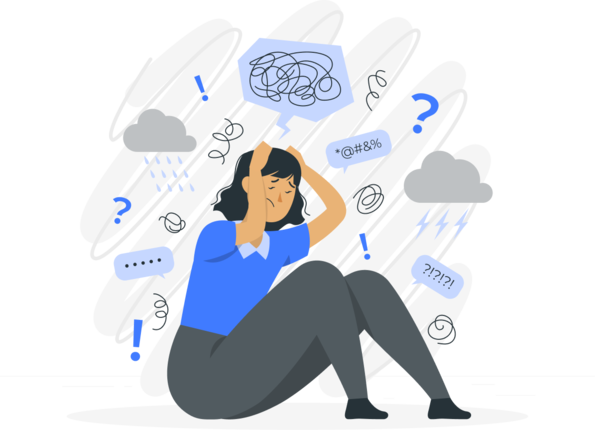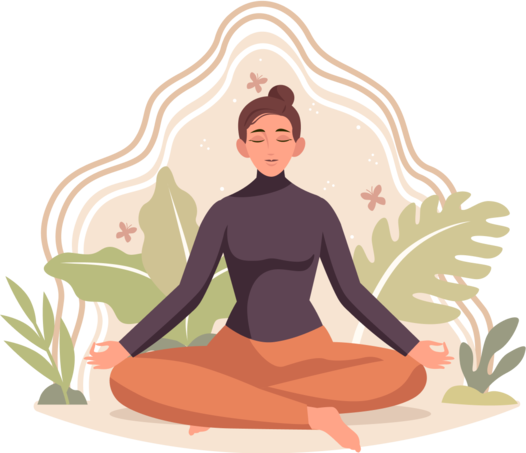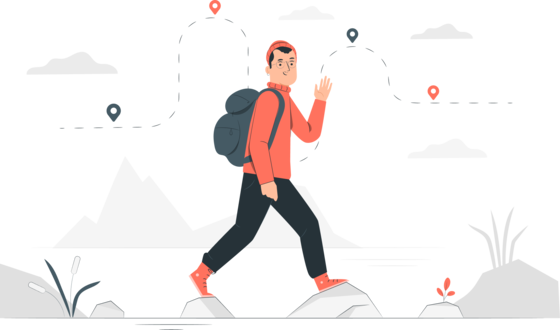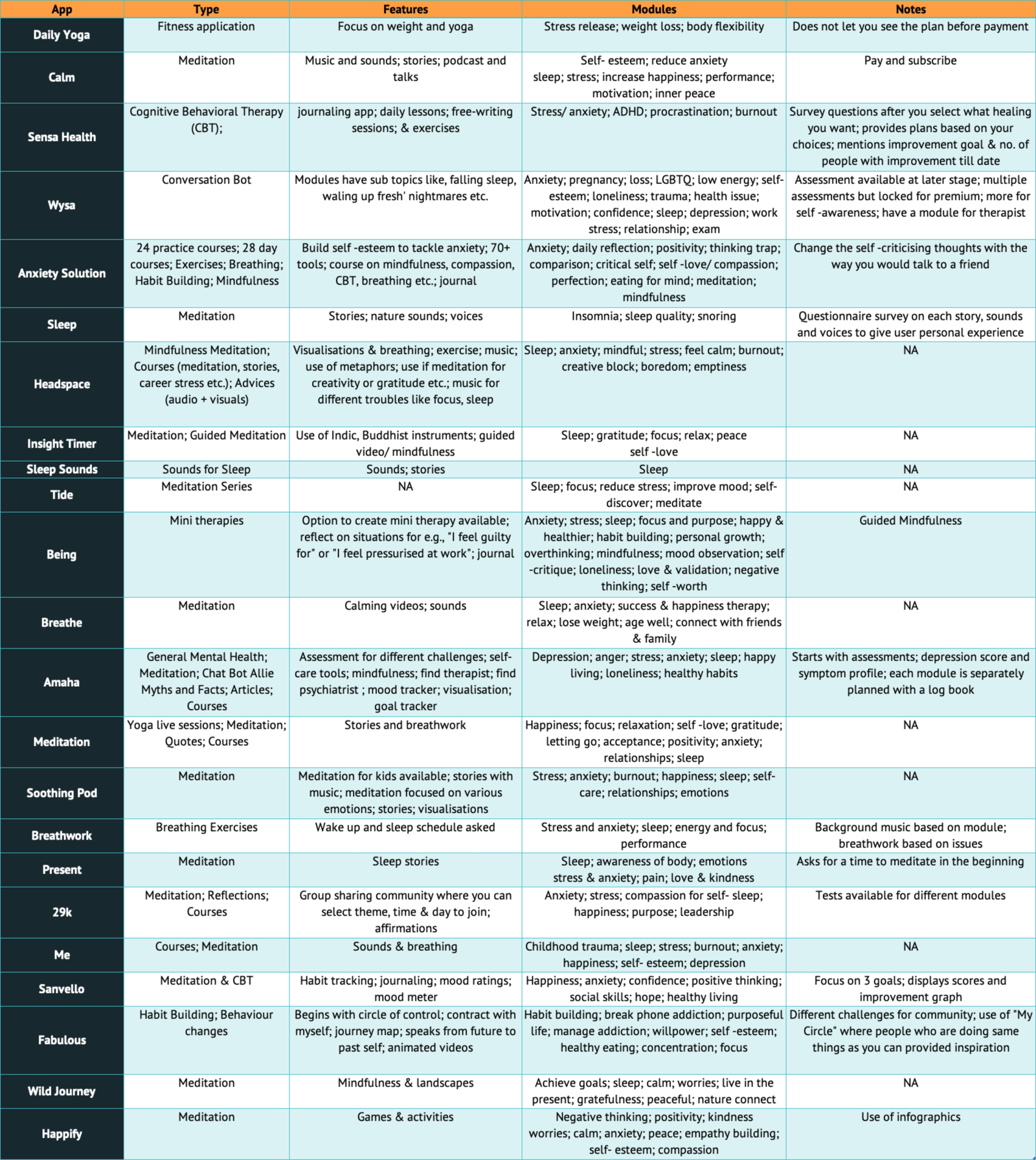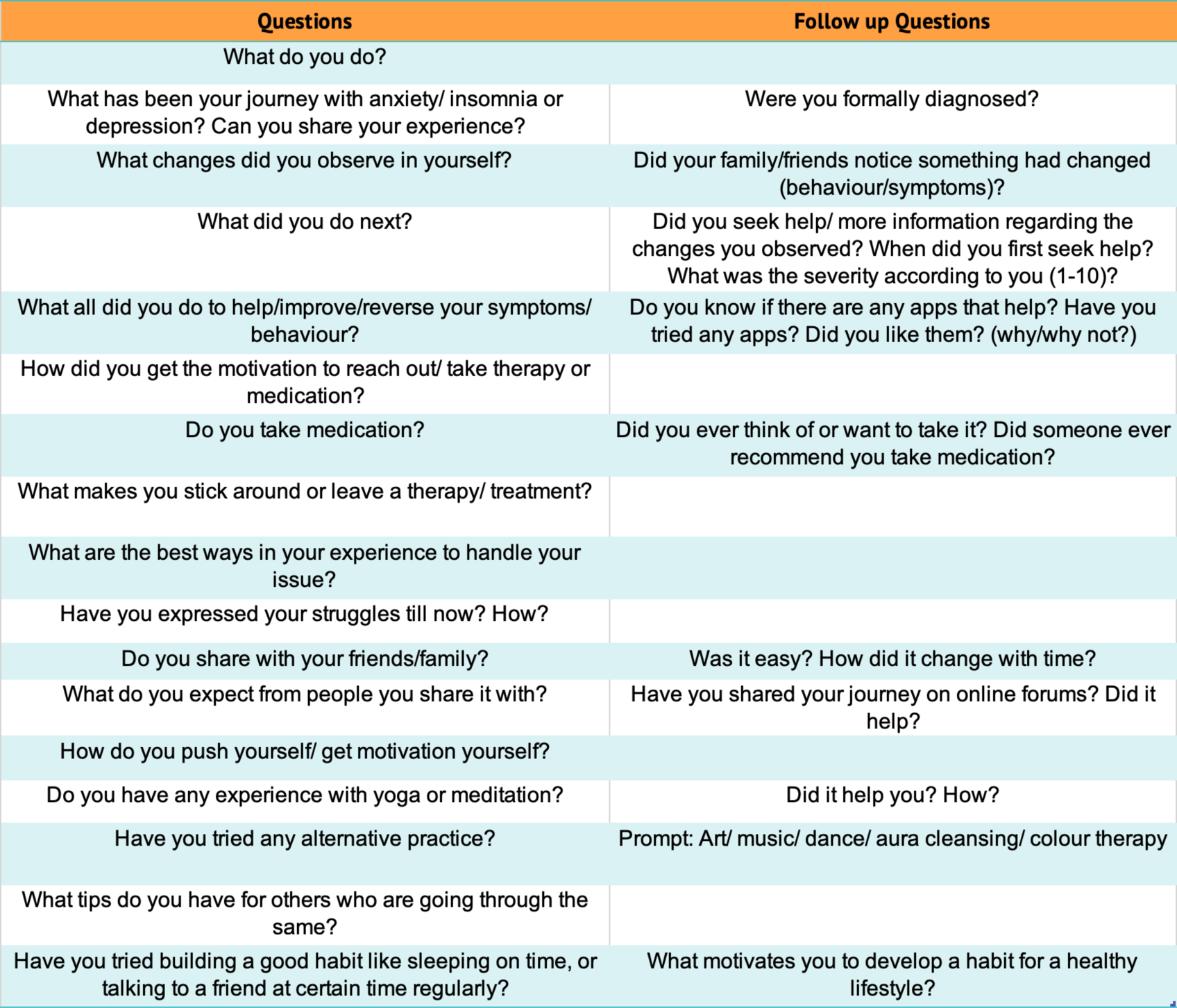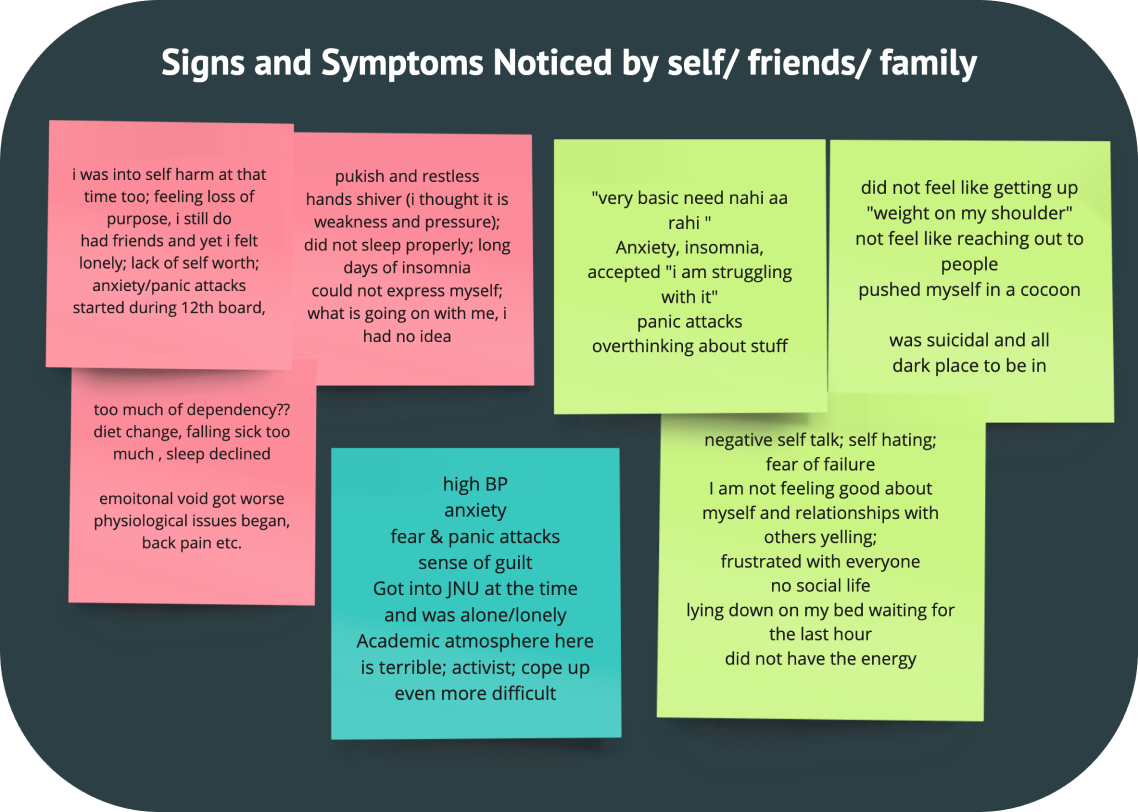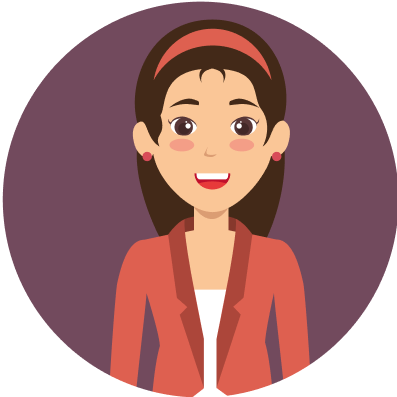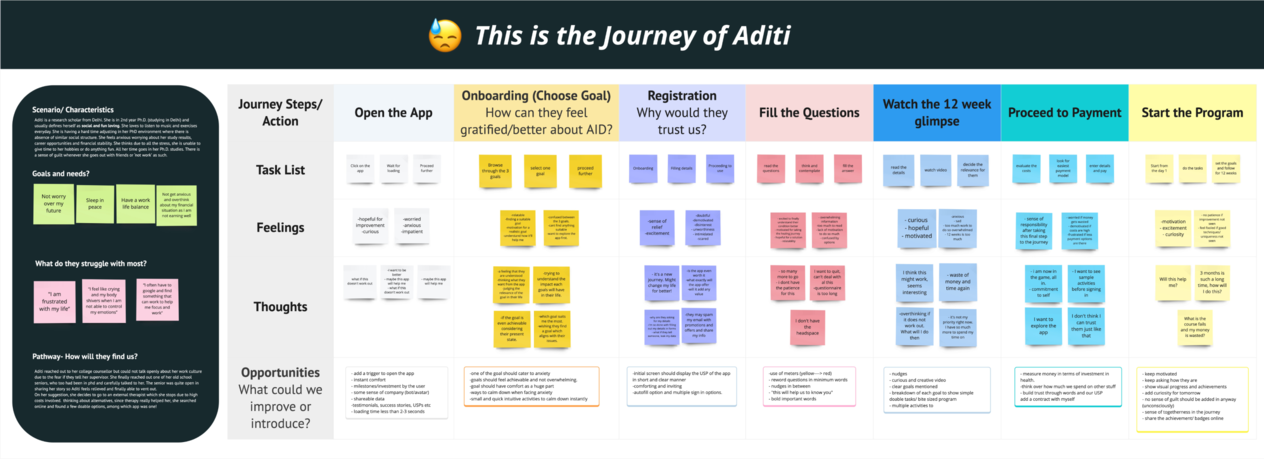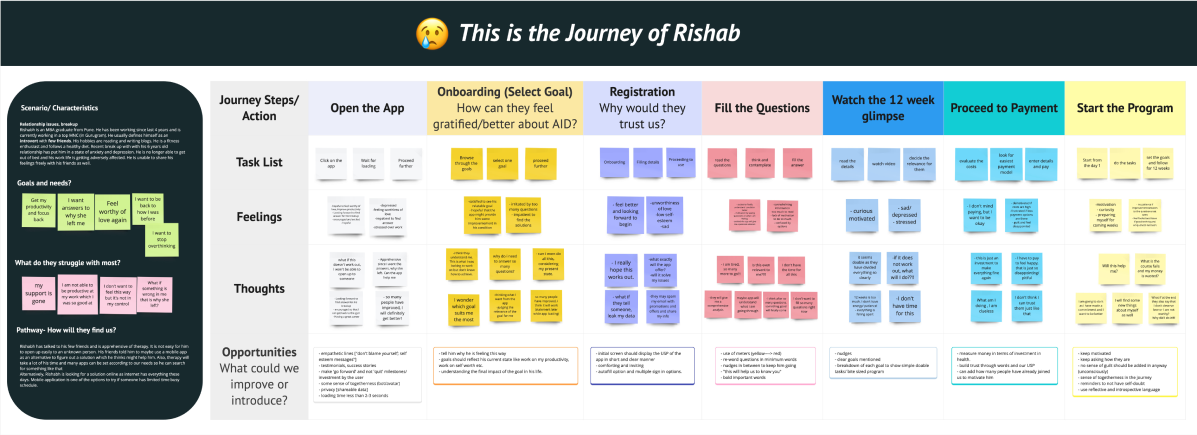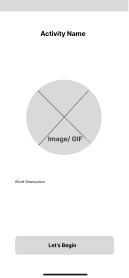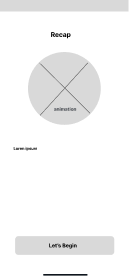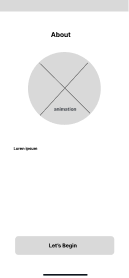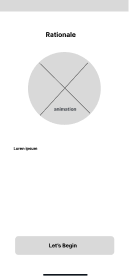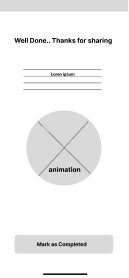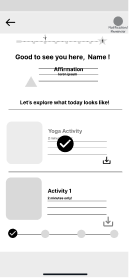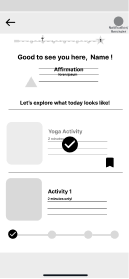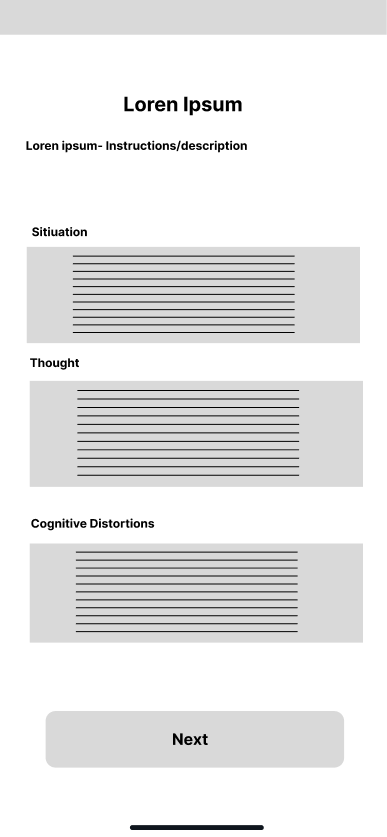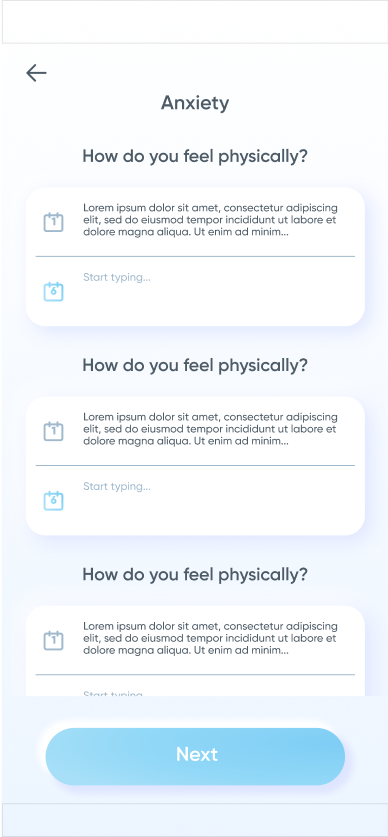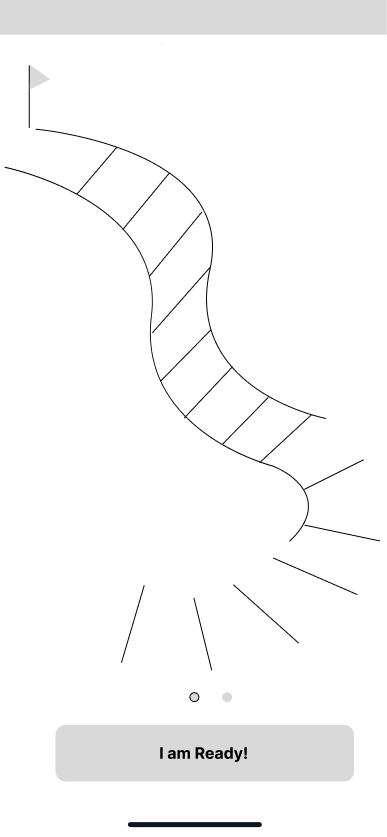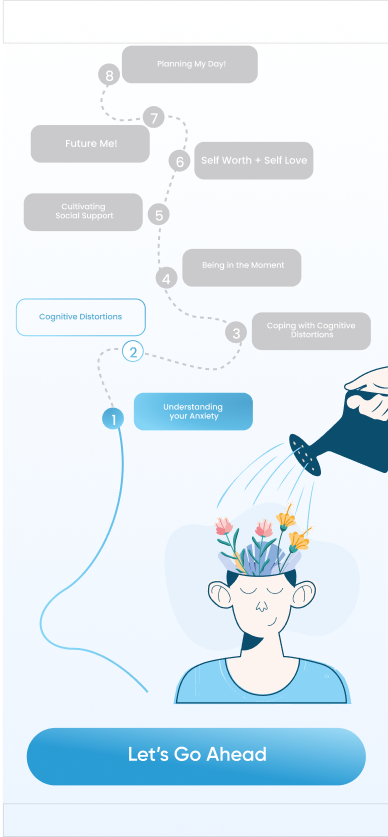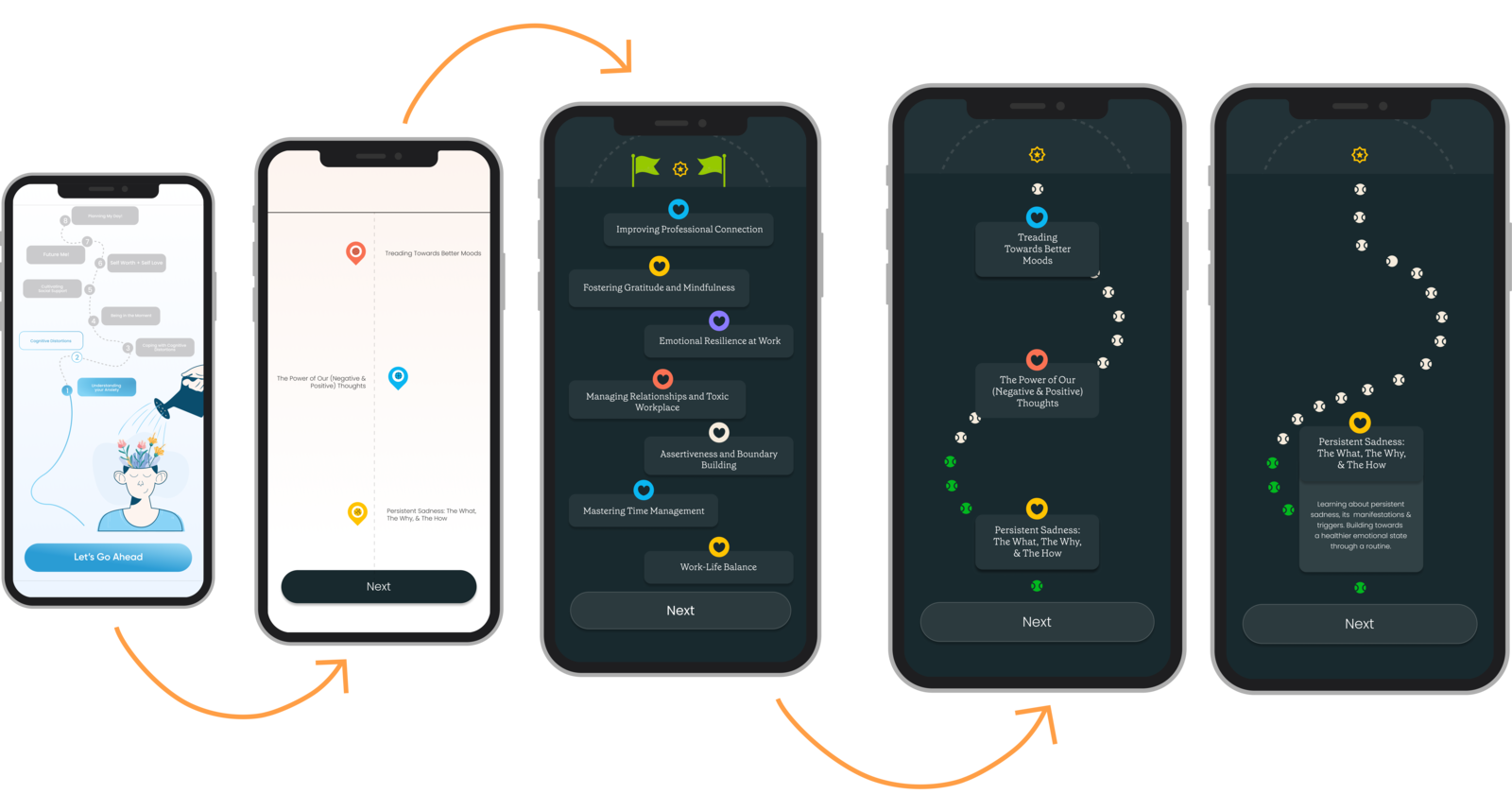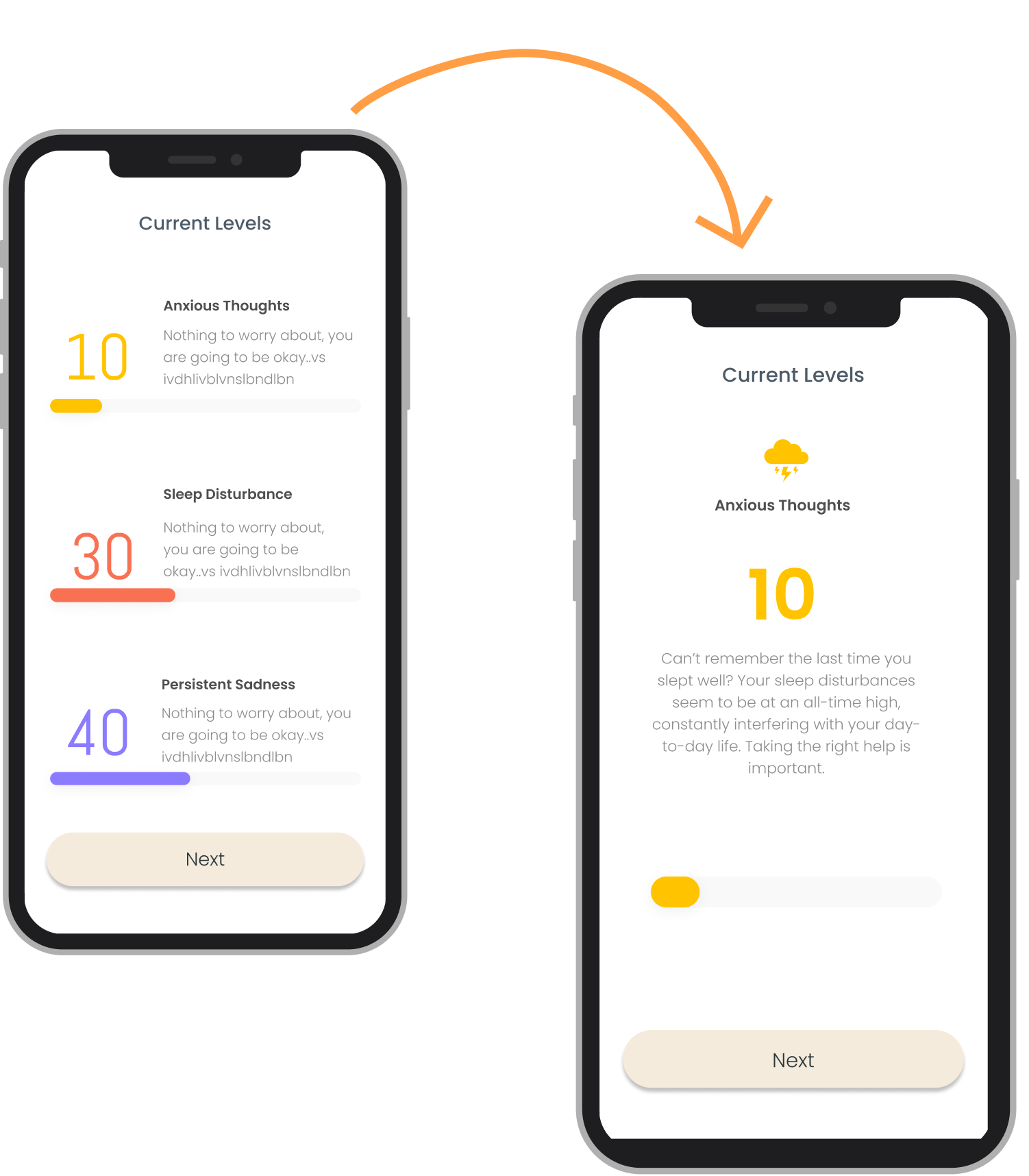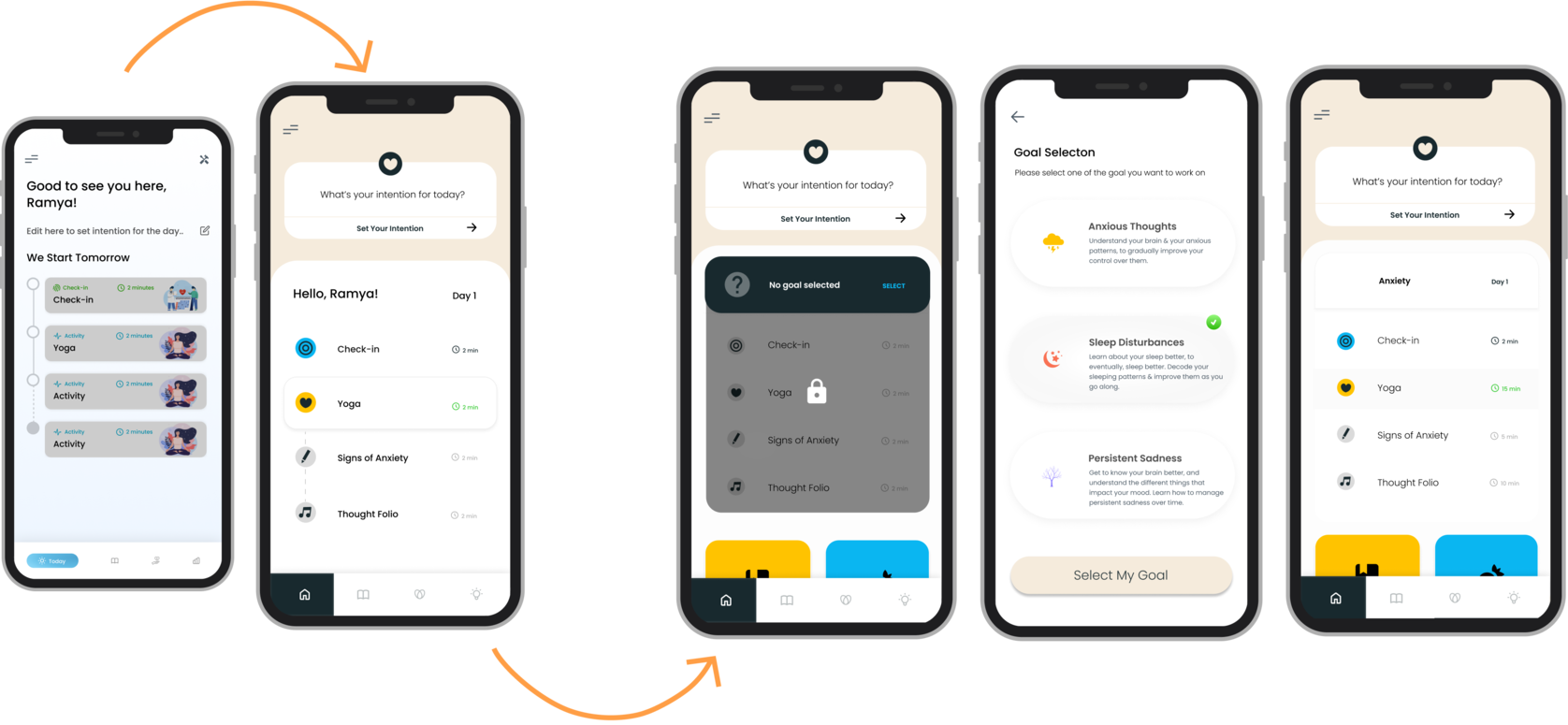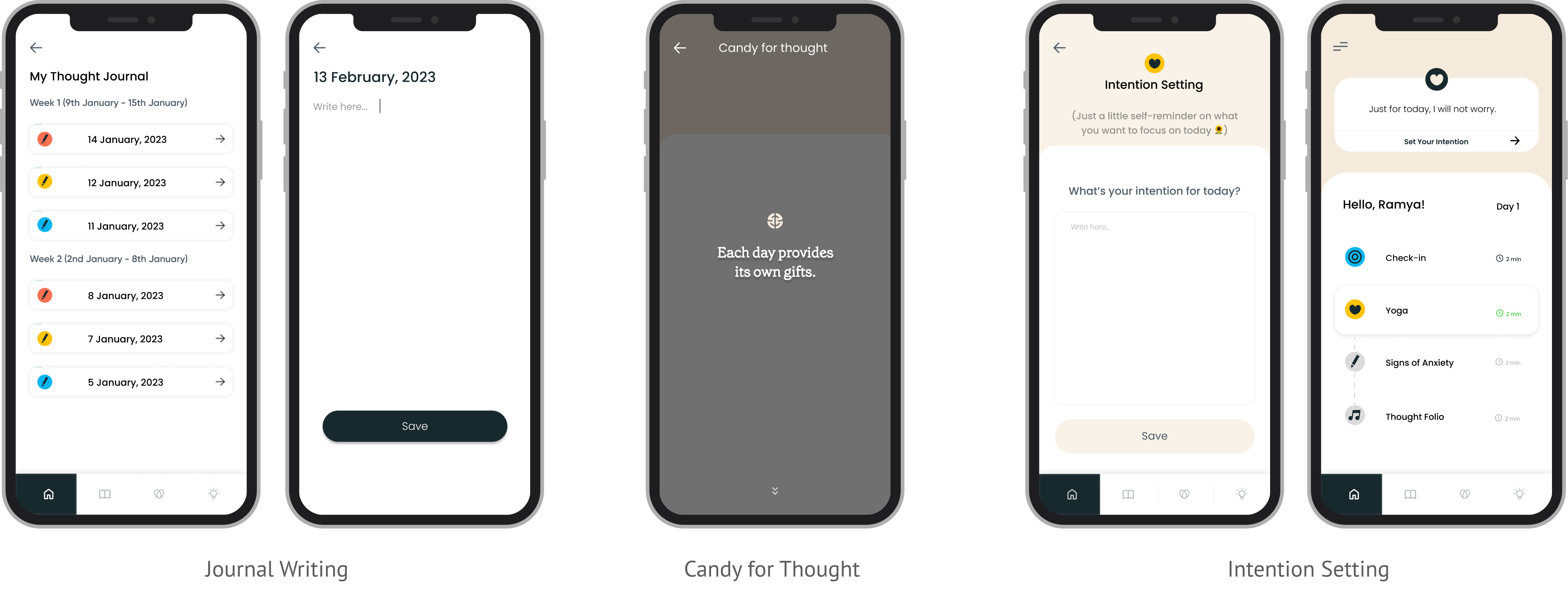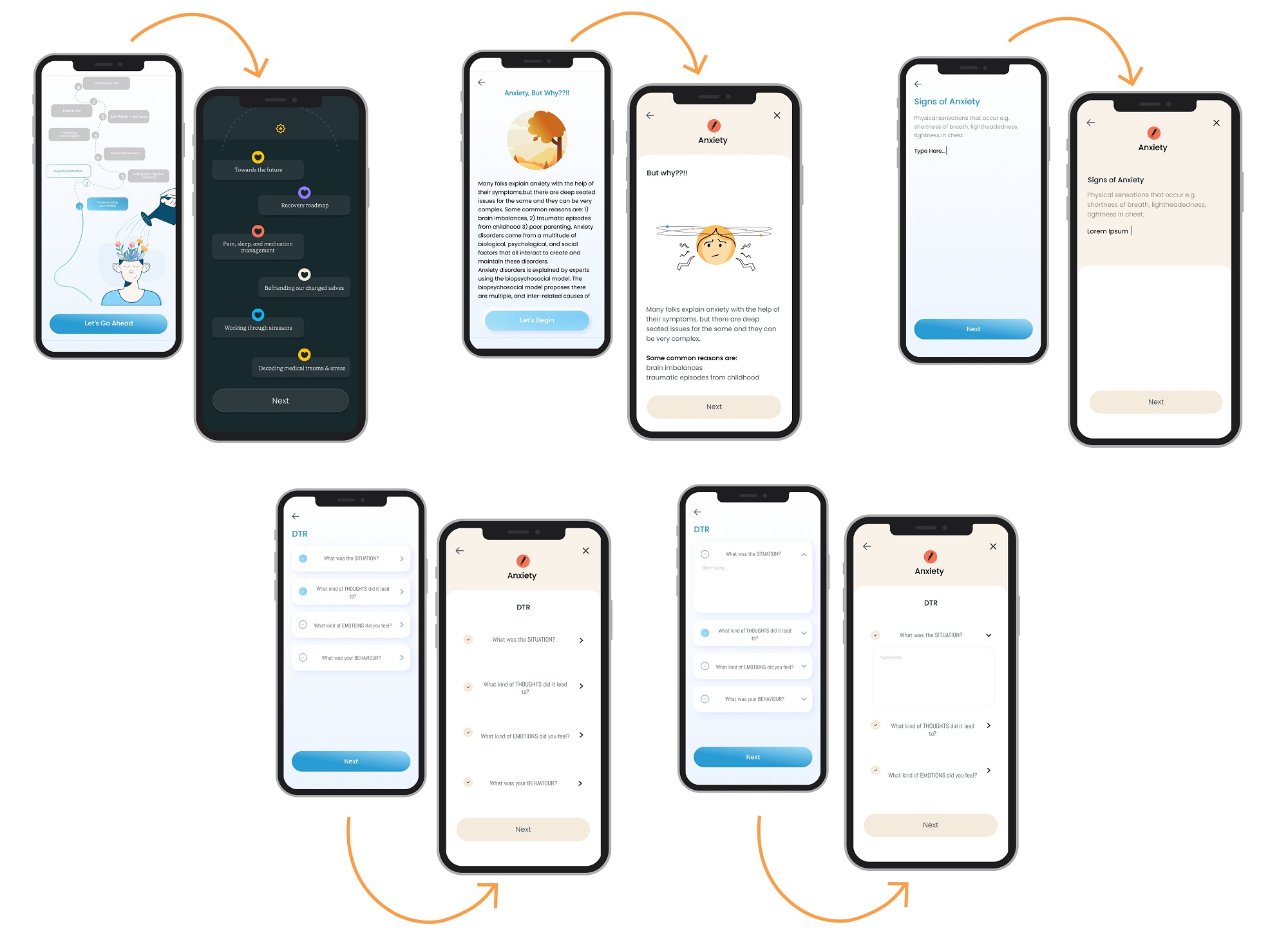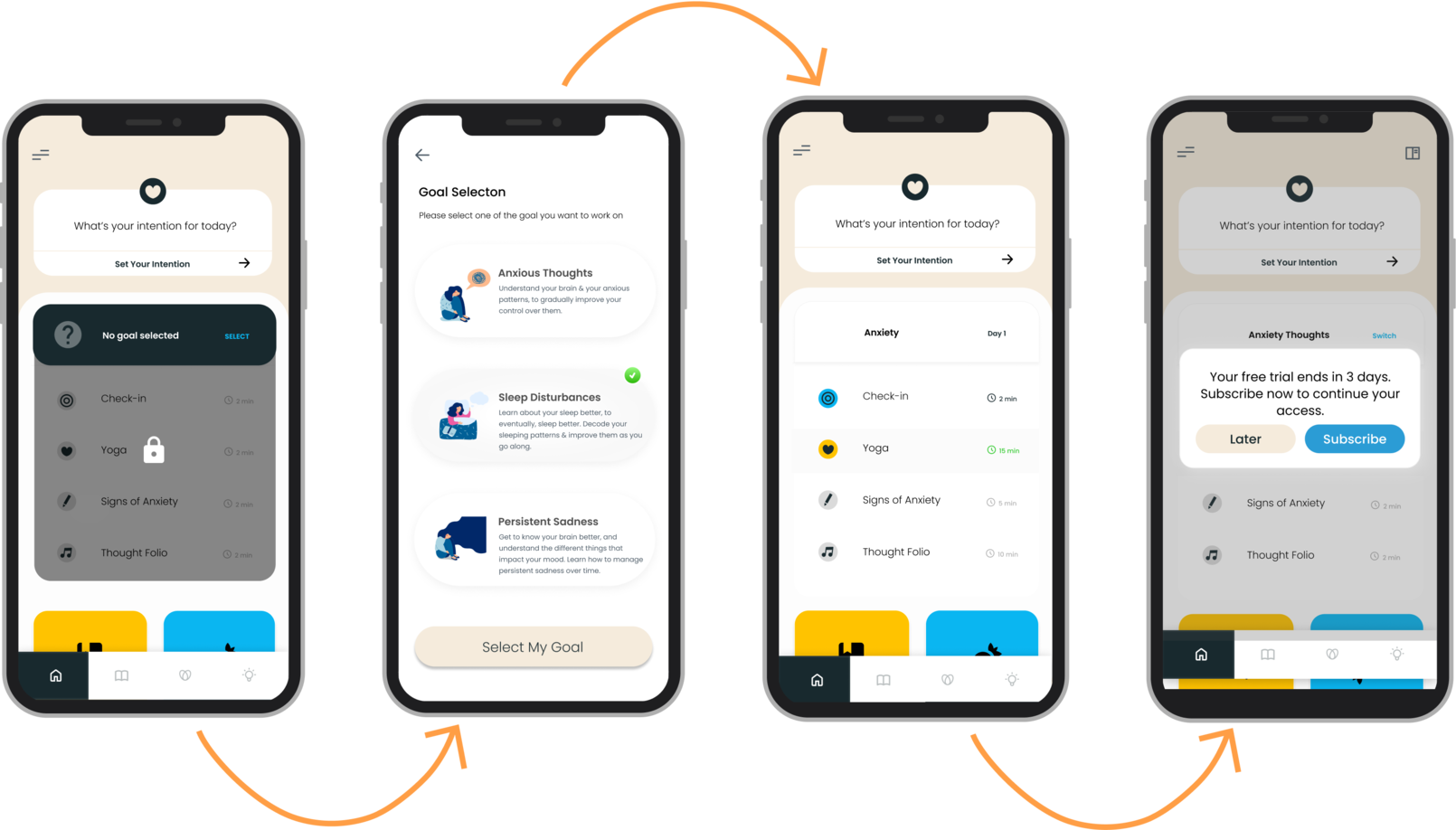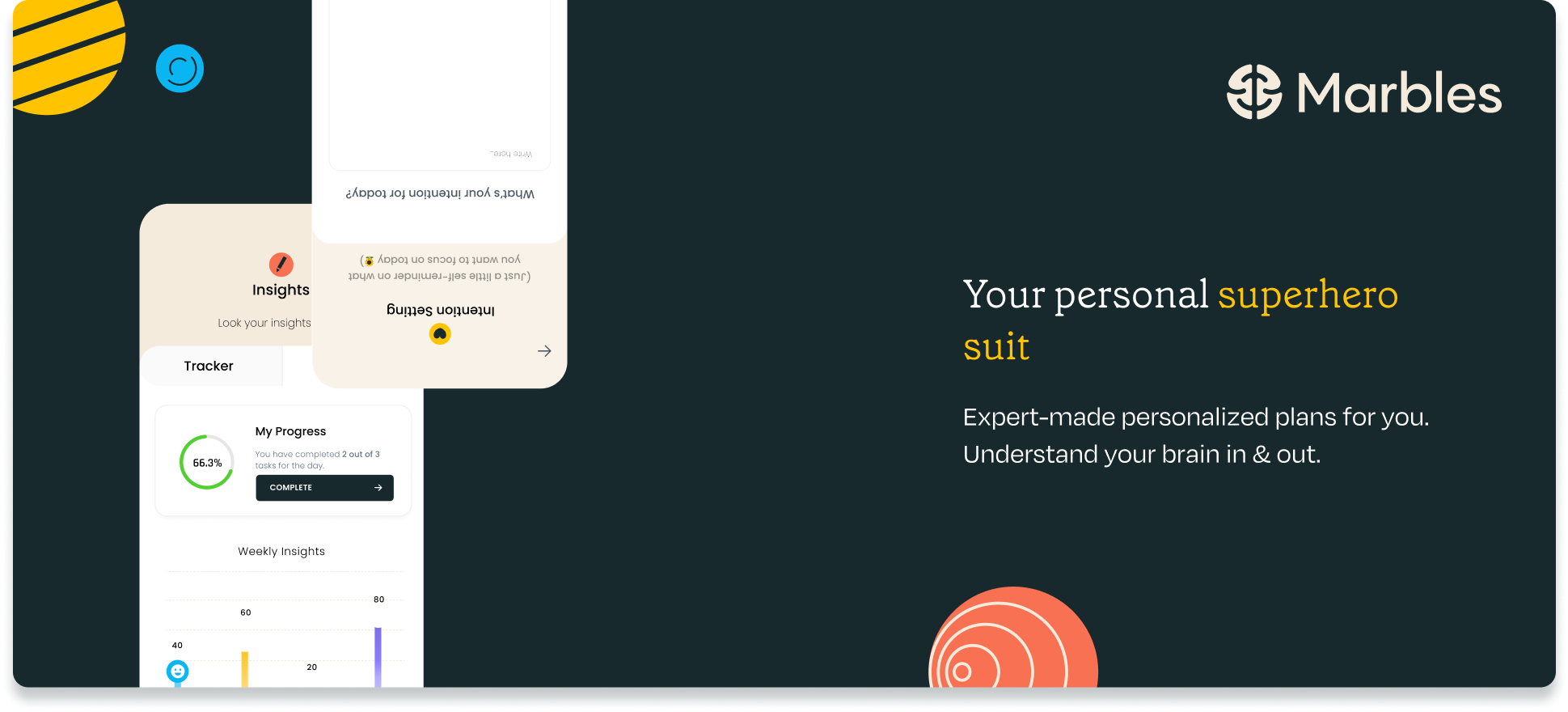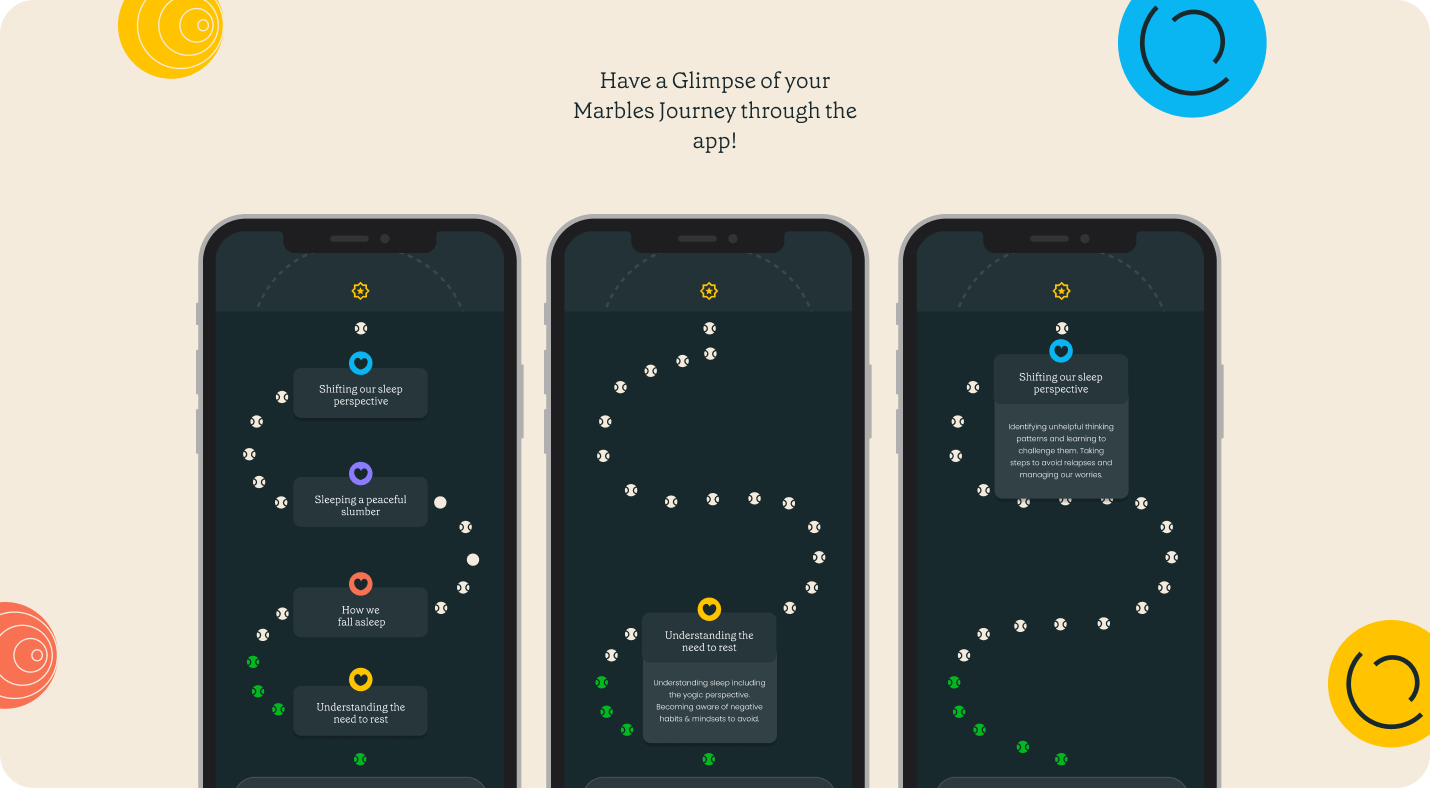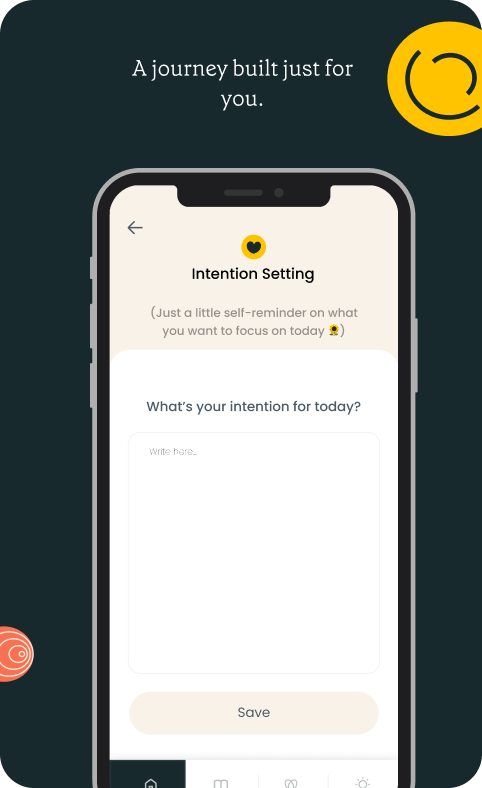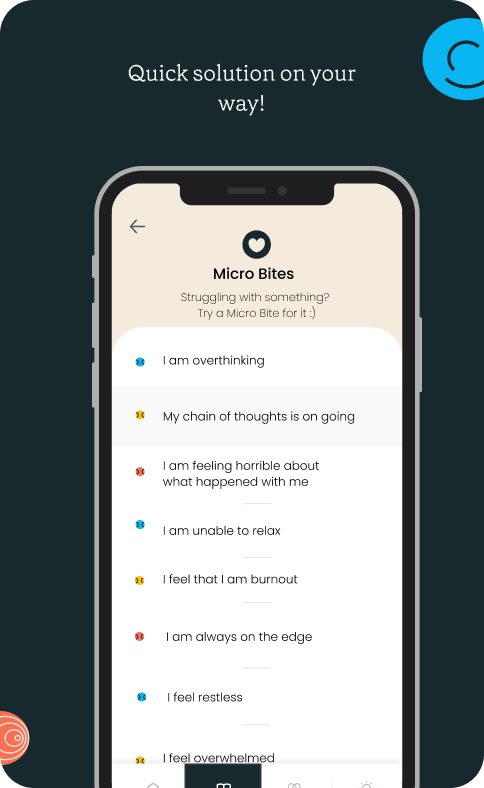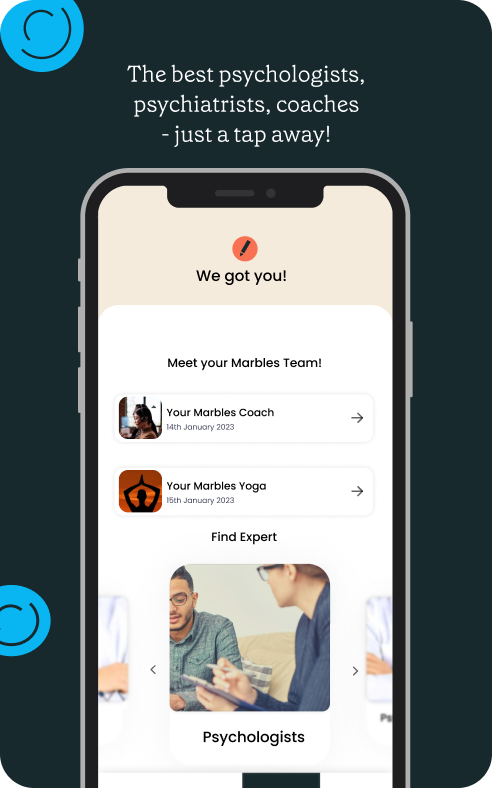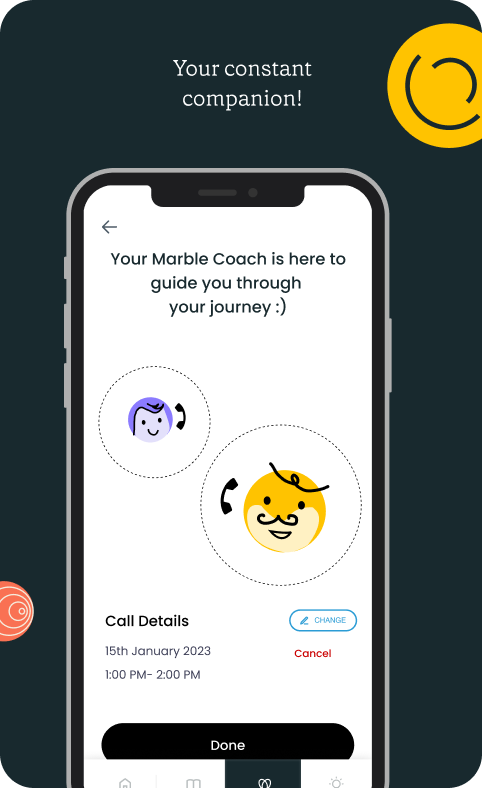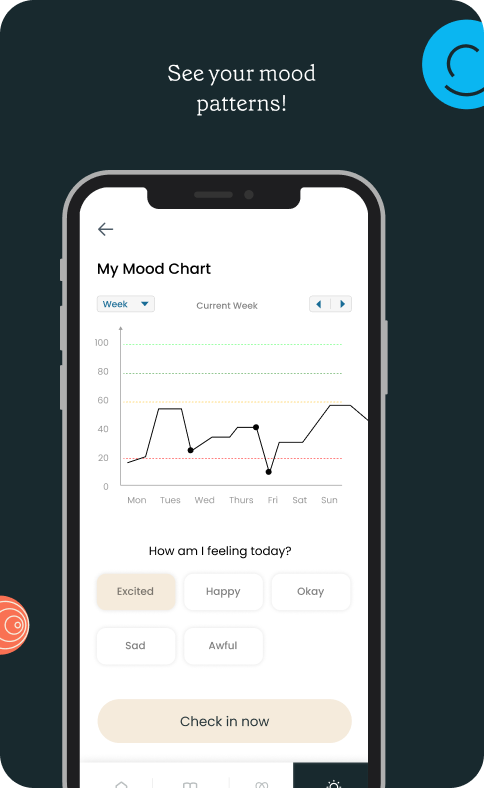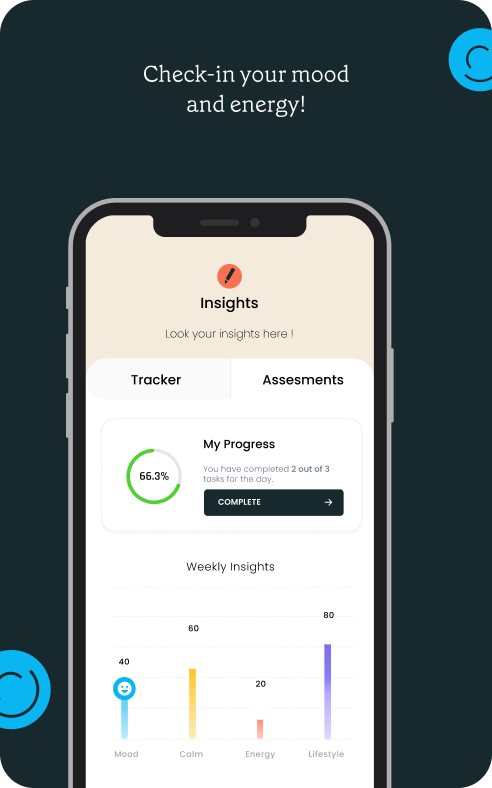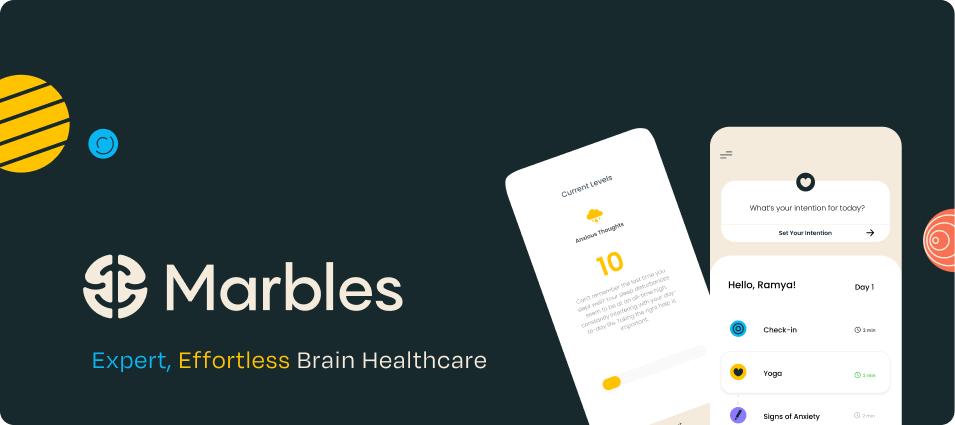I facilitated multiple
brainstorming sessions for our application design with the
Founders and Psychologists. We used methods like Crazy 8, Impact-effort matrix,
MosCow
Method, SCAMPER, and Empathy Mapping to develop optimum solutions,
keeping our approach
dynamic and eclectic to meet the diverse needs reflected by our user base.
For instance, we classified the user interview data by mapping conditions symptom to
possible solutions. We included an activity-based application model, deep-rooted
cause-to-solution matrix, module-based approach, and mini-therapy approach. All these
inputs helped us in refining our designs.
Brainstorming Ideas
Main Features:
Along with my team, I developed some compelling features not offered on most digital
mental health platforms. An amalgamation of these features added freshness to our
application and made it more personal for our users!
Marbles Buddy Call- Our clinical psychologist
reached out to the users through a weekly call to talk about their journey,
progress,
and challenges users were facing while using the application. The primary purpose
was to
provide some form of companionship & support to the user in their restorative
journey.
Intention setting- The first activity users saw
on
the home screen was setting their intention on something meaningful every day. This
was
displayed at the top of their home screen. Later, we observed that setting even
small
intentions helped users cultivate direction and control over their lives and manage
the
anxiety and uncertainties of an open-ended day.
Find an Expert-This feature was added because,
as a
mental health company, we wanted to provide a platform for users to contact
certified
experts in the field. This feature enabled users to search for mental health experts
on
our platform like psychologists, psychiatrists, yoga therapists, art therapists,
etc.,
thereby promoting greater accessibility by breaking geographical barriers. Our users
could schedule sessions, make payments, and join the sessions, and the psychiatrist
could also upload the prescription on the application platform.
Daily insights- Users could track their mood and
energy levels and get insights based on them. This feature helped users understand
their
condition and any progress or derailment made so far, thus making them more
self-aware
and forging greater self-acceptance among them about their struggles. These insights
were also shared with the Marbles Buddy to help them guide the user
Goal Statement
“Our application will help users identify their mental health
condition
(anxiety, insomnia, or depression) and facilitate the process of finding
holistic and unique solutions suited to their needs.”
We measured the effectiveness by:
- User retention
- Sessions/ activities completed by the users
- Plans purchased and modules subscription
Wireframes
To make a precise and lucid design delivery, we narrowed down to
some promising ideas
and created wireframes. As the lead designer, I ensured the process was within
time
constraints. Therefore, I skipped the paper prototype and conducted the
usability
testing with mid-fidelity prototype. Further, as the application was meant for a
user base with diverse needs, our work methodology was more flexible and
sensitive,
involving continuous evaluation and iterations. Our application flow was thus
kept
more flexible. I designed the application outline based on the same. However,
since
the application consisted of complex features, I ensured multiple variations
were
created before finalising the designs.
